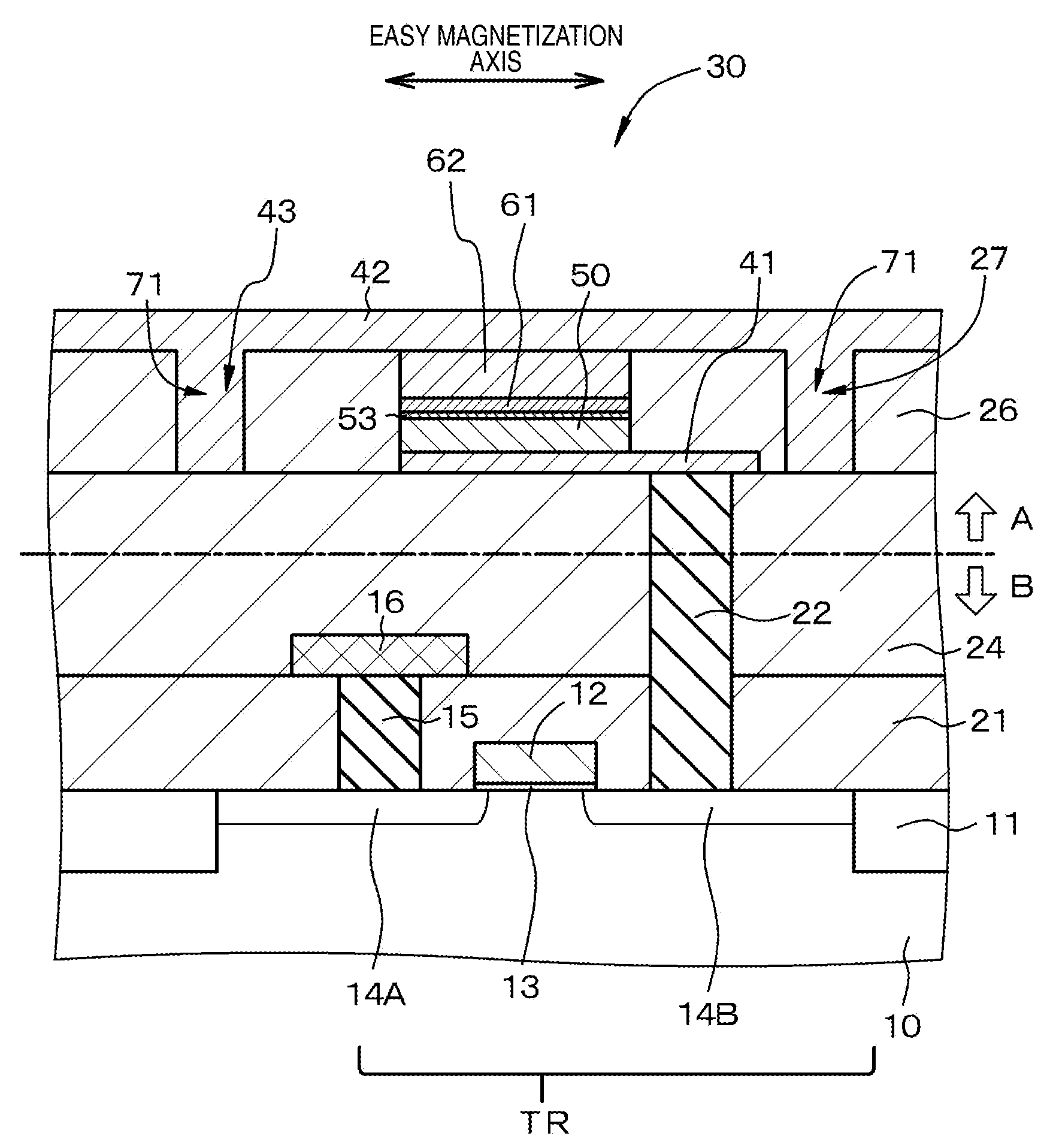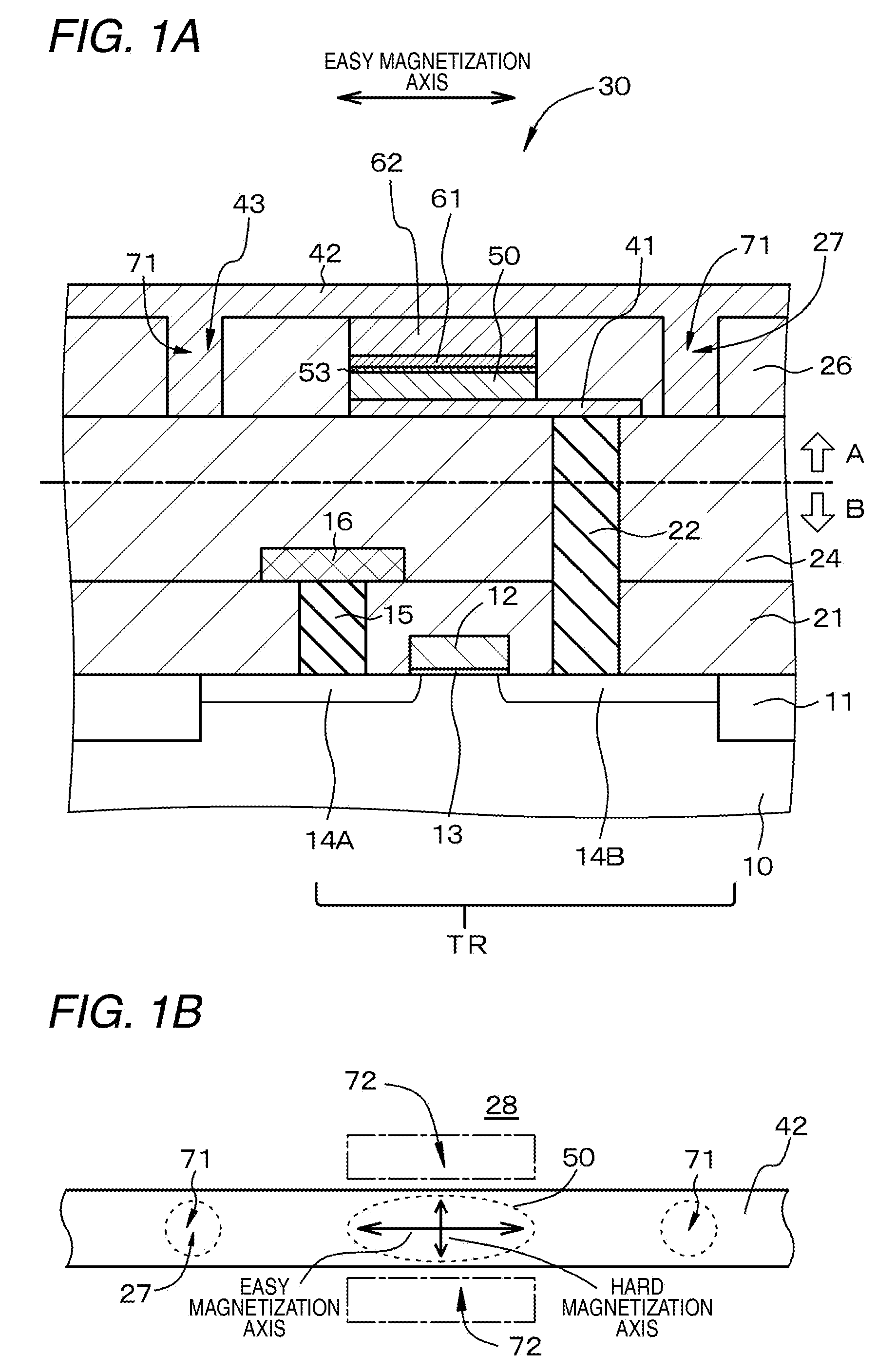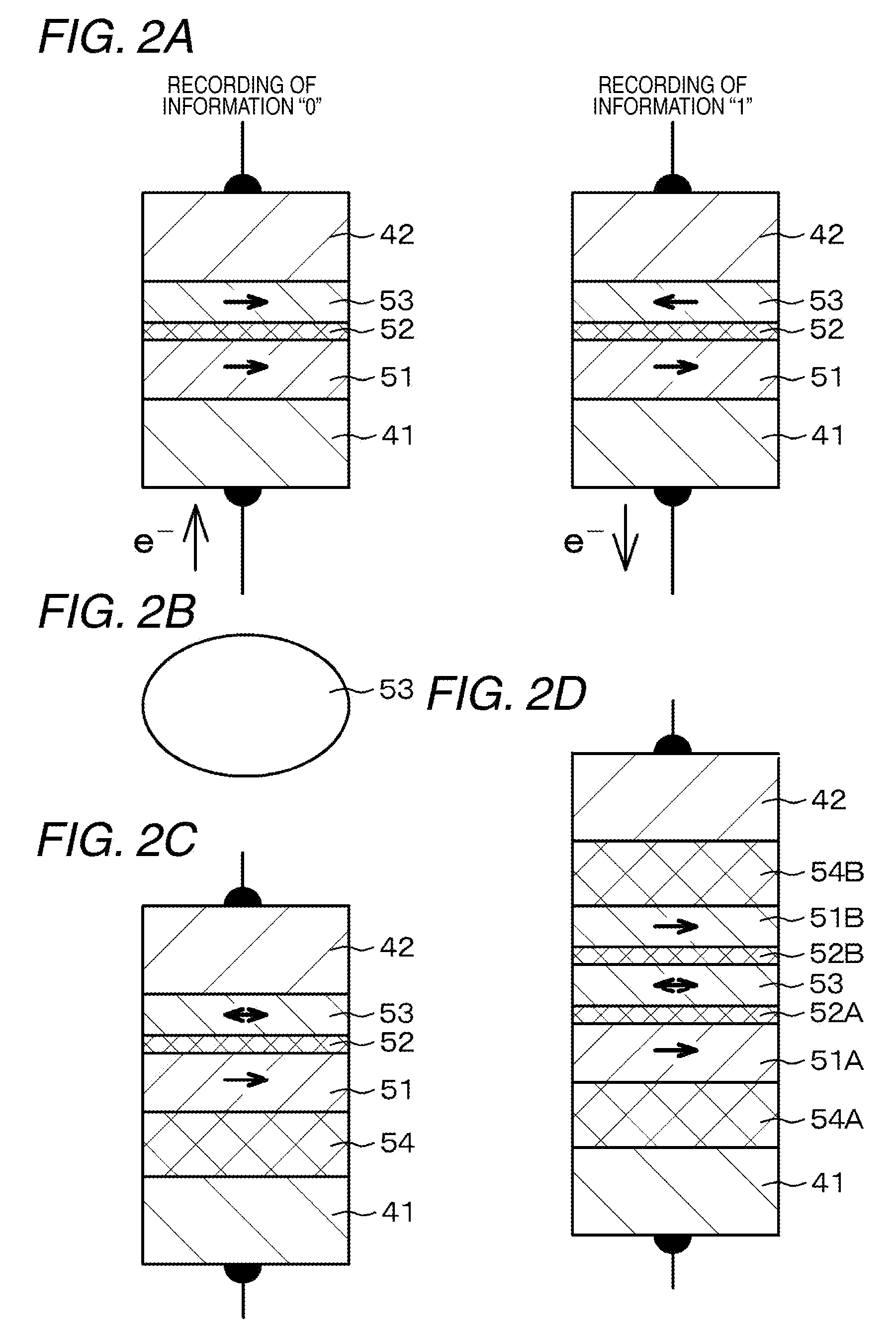Nonvolatile magnetic memory device
a magnetic memory and non-volatile technology, applied in semiconductor devices, digital storage, instruments, etc., can solve the problems of difficult microprocessing of ferroelectric material layers, lower than desired, and write speed on the order of microseconds, so as to improve the index of thermal stability in the equation (1), increase the coercive force hc, and improve the anisotropy field hk.
- Summary
- Abstract
- Description
- Claims
- Application Information
AI Technical Summary
Benefits of technology
Problems solved by technology
Method used
Image
Examples
example 1
[0090]Example 1 relates to the nonvolatile magnetic memory device according to the first and third embodiments of the invention, and specifically, to first configuration. A schematic partial sectional view of the nonvolatile magnetic memory device of Example 1 or Example 3 described below is shown in FIG. 1A, and a schematic layout view of a second wiring and the like is shown in FIG. 1B. A conceptual view of a layered structure is shown in FIG. 2A, and a schematic plan view of a recording layer is shown in FIG. 2B. As shown in the drawings, the nonvolatile magnetic memory device includes a magnetoresistance effect element 30 that includes (A) a layered structure 50 having a recording layer 53, (B) a first wiring 41 electrically connected to a lower part of the layered structure 50, (C) a second wiring 42 electrically connected to an upper part of the layered structure 50, and (D) an interlayer insulation layer 26 surrounding the layered structure 50. In Example 1 to Example 10, the...
example 2
[0151]Example 2 is a modification of Example 1. A schematic partial sectional view of a nonvolatile magnetic memory device of Example 2 is shown in FIG. 4A, and a schematic layout view of a second wiring and the like is shown in FIG. 4B. Unlike FIG. 1A, in FIG. 4A, the all sections of the nonvolatile magnetic memory device are viewed from a direction parallel to the hard magnetization axis. A projection image in an extension direction of a second wiring (bit line) 242 is parallel to a projection image in an extension direction of the gate electrode 12 constituting the field effect transistor.
[0152]In Example 1, the low Young modulus region 71 constituting the magnetoresistance effect element 30 was formed by the extension portion 43 of the second wiring 42. Meanwhile, in Example 2, a low Young modulus region 271 constituting a magnetoresistance effect element 230 is formed by an extension portion 229 of an upper insulation layer 228 surrounding the second wiring 242. As indicated by...
example 3
[0159]Example 3 is also a modification of Example 1, and relates to the second configuration. In Example 3, the Young modulus E1 of the material forming the first wiring is higher than the Young modulus E0 of the material forming the interlayer insulation layer 26. Specifically, the material forming the first wiring is ruthenium (Ru, Young modulus E1: 4.1×1011 Pa). As the material forming the first wiring, other materials, for example, tungsten (W, Young modulus E1: 3.5×1011 Pa) may be used. In Example 3, the material forming the connection portion is TiN (Young modulus: 1.1×1011 Pa), and does not have a function as a source applying stress.
[0160]Except for the above configuration and structure, the configuration and structure of the nonvolatile magnetic memory device of Example 3 may be the same as the configuration and structure of the nonvolatile magnetic memory device of Example 1, and thus detailed descriptions thereof will be omitted. In Example 3, the configuration and struct...
PUM
 Login to View More
Login to View More Abstract
Description
Claims
Application Information
 Login to View More
Login to View More - R&D
- Intellectual Property
- Life Sciences
- Materials
- Tech Scout
- Unparalleled Data Quality
- Higher Quality Content
- 60% Fewer Hallucinations
Browse by: Latest US Patents, China's latest patents, Technical Efficacy Thesaurus, Application Domain, Technology Topic, Popular Technical Reports.
© 2025 PatSnap. All rights reserved.Legal|Privacy policy|Modern Slavery Act Transparency Statement|Sitemap|About US| Contact US: help@patsnap.com



